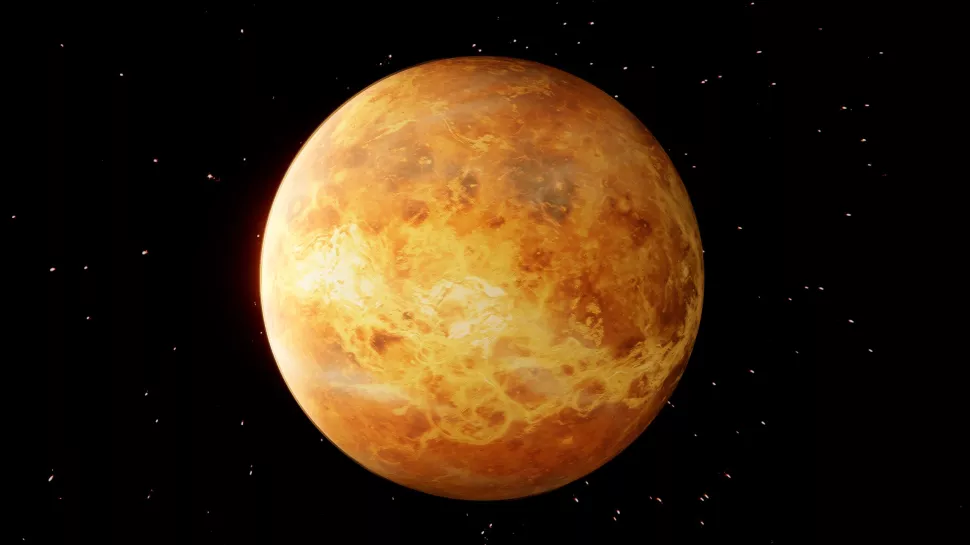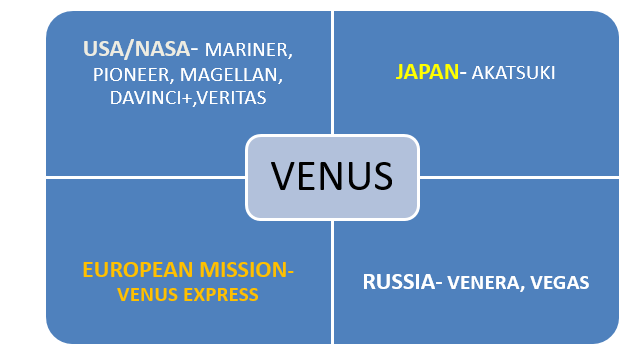17 Jan ISRO setting back the “Shukrayaan” Venus mission to 2031
Posted at 17 Jan 2023
in Current Affairs, Daily Current Affairs for UPSC, Science and technology, Uncategorized
0 Comments
ISRO setting back the “Shukrayaan” Venus mission to 2031
This article covers “Daily Current Affairs for UPSCand the topic is about the ‘Shukrayaan Mission in 2031’ which is in news, it covers “Science and Technology” In GS-3, the following content has relevance for UPSC.
For Prelims: Facts about the Shukrayaan mission
For Mains: GS-3, Space technology, Significance and challenges associated with it.
Why in news:
- A professor at the Indian Space Research Organization (ISRO) and advisor to its space research program stated in a talk that the organization has not yet received Indian government approval for the Venus trip and that the project may therefore be delayed until 2031.
- Shukrayaan I, the name of ISRO’s Venus mission, was slated to go off in December 2024. The concept was conceived in 2012, and after the Department of Space got a 23% increase in funding for the 2017–2018 budget, ISRO started preliminary research five years later. In April 2017, the organization asked research institutions for payload proposals.
About Shukrayaan Mission
- The orbiter may carry a science payload of up to 100 kg and 500 W of electricity, depending on the final configuration.
- 500 km at periapsis and 60,000 km at apoapsis are predicted for the original elliptical orbit of Venus.
- The GSLV Mk II rocket is intended to carry the satellite into orbit.
- With a scientific instrument to examine the planet, Sweden is joining India’s Venus orbiter mission, “Shukrayaan.”
- Venusian Neutrals Analyzer (VNA), a satellite instrument from the Institute of Space Physics (IRF), will examine the interactions between the planet’s atmosphere and exosphere and charged particles from the Sun.
Aims and Objectives of the Shukrayaan Mission
- For the Investigation of shallow subsurface stratigraphy and surface processes.
- No previous observations of Venus’s subsurface have been made before.
- In the field of geology known as stratigraphy, rock layers, and layering are investigated.
- To study the atmosphere’s behavior, chemistry, and structure.
- Examining the effects of the solar wind on the ionosphere of Venus.
Significance
- Learning about the evolution of Earth-like planets and the conditions on Earth-sized exoplanets will be useful (Planets that orbit a star other than our sun).
- It will aid in Earth’s climate modeling and serves as a sobering reminder of just how drastically a planet’s climate can alter.
- A device to study Venus’ atmosphere in the infrared, ultraviolet, and sub-millimeter range will also be carried by the expedition.
- It will shed light on the atmospheric conditions and the evolution of Earth-like planets.
- A futuristic illustration of how climate change may significantly affect a planet will also be a goal of this project.
Challenges
- Given its dense atmosphere and surface activities, which make it a complicated planet, Venus presents various difficulties compared to Mars.
- The equipment must penetrate the atmosphere deeply in order to gain deeper knowledge.
- The space agency intends to utilize a high-resolution Synthetic Aperture Radar (SAR) on the spacecraft as one of its instruments to analyze Venus’ surface despite the planet’s surrounding clouds.
- In order to see through the clouds and darkness of the Venusian atmosphere, high-resolution sensors are required.
About the Venus

Venus
- It is the second-brightest natural object in the night sky after the Moon, which is presumably why it was the first planet whose motions were mapped across the sky in the second millennium BC.
- Venus and Uranus rotate on their axes in the opposite direction from the other planets in our solar system.
- Due to the extreme greenhouse effect caused by the high concentration of carbon dioxide, it is the warmest planet in the solar system.
- Venus has days that are longer than a year. Venus takes longer to complete one rotation on its axis than it does to complete one orbit around the Sun.
- The longest rotation of any planet in the Solar System is 243 Earth days. The shortest orbital period of the Sun takes only 224.7 Earth days.
- Because of their comparable relative positions in the solar system and their similar masses, sizes, and densities, Venus has been referred to as Earth’s twin.
- No planet comes closer to Earth than Venus, which at its closest point is the only other big body that is closer than the Moon.
- The pressure of Venus’ atmosphere is 90 times that of Earth.
Other missions to Venus

Venus
Source:
Daily Current Affairs for UPSC
Read the best daily current affairs for the UPSC examination from Plutus IAS free of cost. Also, gather general knowledge to scrutinize the weekly, and monthly current affairs today for IAS exam preparation.



No Comments